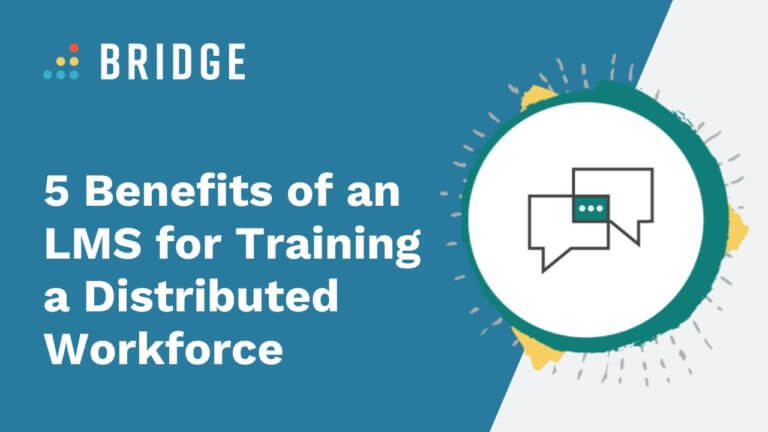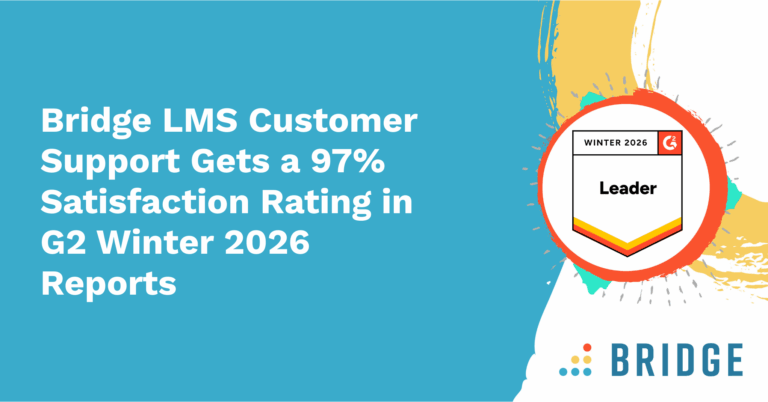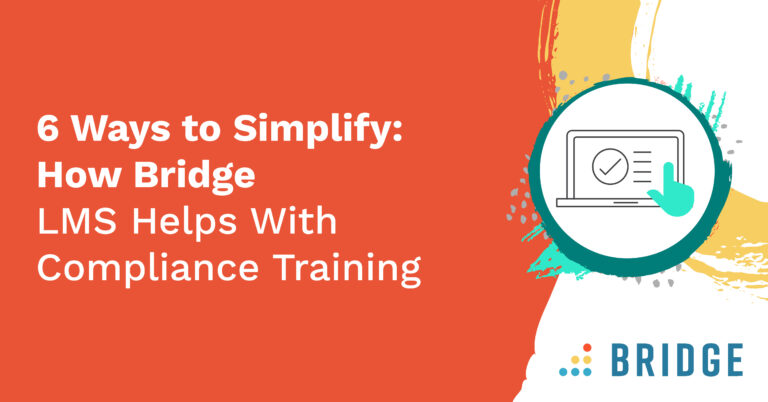Distributed workforces present unique training challenges.
In decentralized business models and franchises, the independent business units generally have autonomy over their tools and hierarchies. Meanwhile the corporate brand has a responsibility to ensure that compliance standards are being met and enablement is happening for the organization’s greater good.
Enter an LMS.
Even if HR is decentralized, there are many reasons why a centralized LMS can powerfully impact the entire organization. Here are five that we feel are particularly significant:
1) Centralized Learning Management Systems Simplify Enablement
A central corporate agency will typically have all of the training necessary to keep each independent company in compliance while also providing access to things like onboarding journeys and brand education programs. For the most mature organizations, there may also be access to a skill and employee development curriculum.
This can result in a lot of pressure to a) maintain delivery of that coursework, especially with course updates, and b) leave that work to your independent business owners.
A centralized LMS like Bridge, which gives admins control to set and limit visibility, exposure, and permissions using smart groups and sub-account functionalities, allows learnable items to be a single source of truth. If content needs to be updated, it will update across the entire system for all users. This makes it much easier to maintain content quality.
Plus, if employees migrate through different units or franchises under the same umbrella of a parent company, they can expect a consistent experience when that parent company uses a centralized LMS. They do not have to learn another tool or worry about the migration of their historical training (something they would likely otherwise have to manage alone when the systems are separately owned and operated).
MORE FROM THE BLOG | ‘5 Ways to Achieve Better Employee Onboarding With Bridge Journeys’
2) It’s Easier to Remain Compliant With a Centralized LMS
When there’s a single source of truth for compliance training, the account admins can manage required due dates and re-enrollment behaviors from one location. This allows them to, for example, automatically re-enroll the entire workforce for certain courses with annual compliance requirements.
A single source of truth also relieves pressure from the distributed business units in terms of helping them stay abreast of the ever-changing compliance landscape. Again, even if HR is decentralized, the unique roles and permissions that can be affiliated with these team members in the LMS can allow for ease of sharing content across units and the provisioning of content to workers. One common use case is that organizations can group workers into location-based smart groups thereby automating course delivery of content exclusively relevant in certain US states.
In this way, a centralized LMS sets up system admins to trust their business unit and franchise operators while also providing non-invasive ways to verify that trust. The fact that admins can internally pull full-system reports saves those individual unit operators hours of work that would otherwise be spent on gathering their own reports to deliver to admins.
LEARN MORE ABOUT COMPLIANCE WITH BRIDGE | ‘Bridge Journeys for Compliance Training: 5 Ways to Strengthen Your Training Programs’
3) A Centralized LMS Empowers Managers to Hold Employees Accountable
A centralized LMS means consistent and consolidated reporting. A distributed workforce often comes hand-in-hand with a variety of different tech stacks, each business unit operating in a silo, limiting visibility to the umbrella group as a result.
Bridge Analytics allows for account admins or custom analytics viewers to easily see learner behaviors across the entire ecosystem of the LMS (this is true whether the instance is set up with smart groups or sub-accounts as the design). It’s possible to view the courses with the most enrollments, mandatory training with overdue learners, and the managers who have the highest volume of reports not in compliance.
Managers can receive weekly summary email overviews of who among their reports has upcoming training and overdue training. Through Analytics, business unit leads or training managers can receive automated reports that can be leveraged as CSV files or integrated with BI tools.
Access to data empowers managers to hold their employees accountable, and this same data is visible at the administrative level in a centralized LMS.
4) A Centralized LMS Will Increase Visibility on Individual Business Unit Culture
Visibility also increases on the culture for the individual business units. In retail, if a store is consistently low-performing, correlations can often be made to training. The data provided in Bridge Analytics can allow for proactive attention to those stores instead of being caught in a cyclical reactive state.
Admins can also see the engagement of the respective authors around content that they’re managing, what programs or Journeys are being built for employee onboarding streams and skill development, and which workers are self-enrolling in the most content from the library. Because of the centralization of the content with a single LMS, workers will have access to more diverse content to build their skills no matter where they’re working from.
THOUGHTS ON ANOTHER ASPECT OF CULTURE | ‘4 Ways to Create a Culture of Conversation for Your Organization’
5) You Can Better Ensure Brand Consistency With a Centralized LMS
For many distributed workforces, whether corporate structures or franchises, brand consistency can be a challenge. The standards likely exist, but it’s cumbersome (and unrealistic) to think that everything can be monitored all the time.
A centralized LMS creates brand consistency. Employees log into the tool and know what to expect. Not only does it simplify the workflows of individuals who may migrate to different business units or to other franchisees, it also subconsciously sets the tone that all units are part of a single brand (because they are!).
Connect Your Workforce With Bridge’s LMS
Increase connection, clarity, and quality across your organization with Bridge’s learning management system. Standardize brand identity, centralize learning materials, and consolidate reporting across the ecosystem to drive enablement and boost results.
Bridge gives you visibility to manage content delivery, roll out updates, and proactively target training across franchises and business units to build skills and keep learners compliant. Use Bridge Analytics to automate reporting, improve performance, and respond to training needs.




